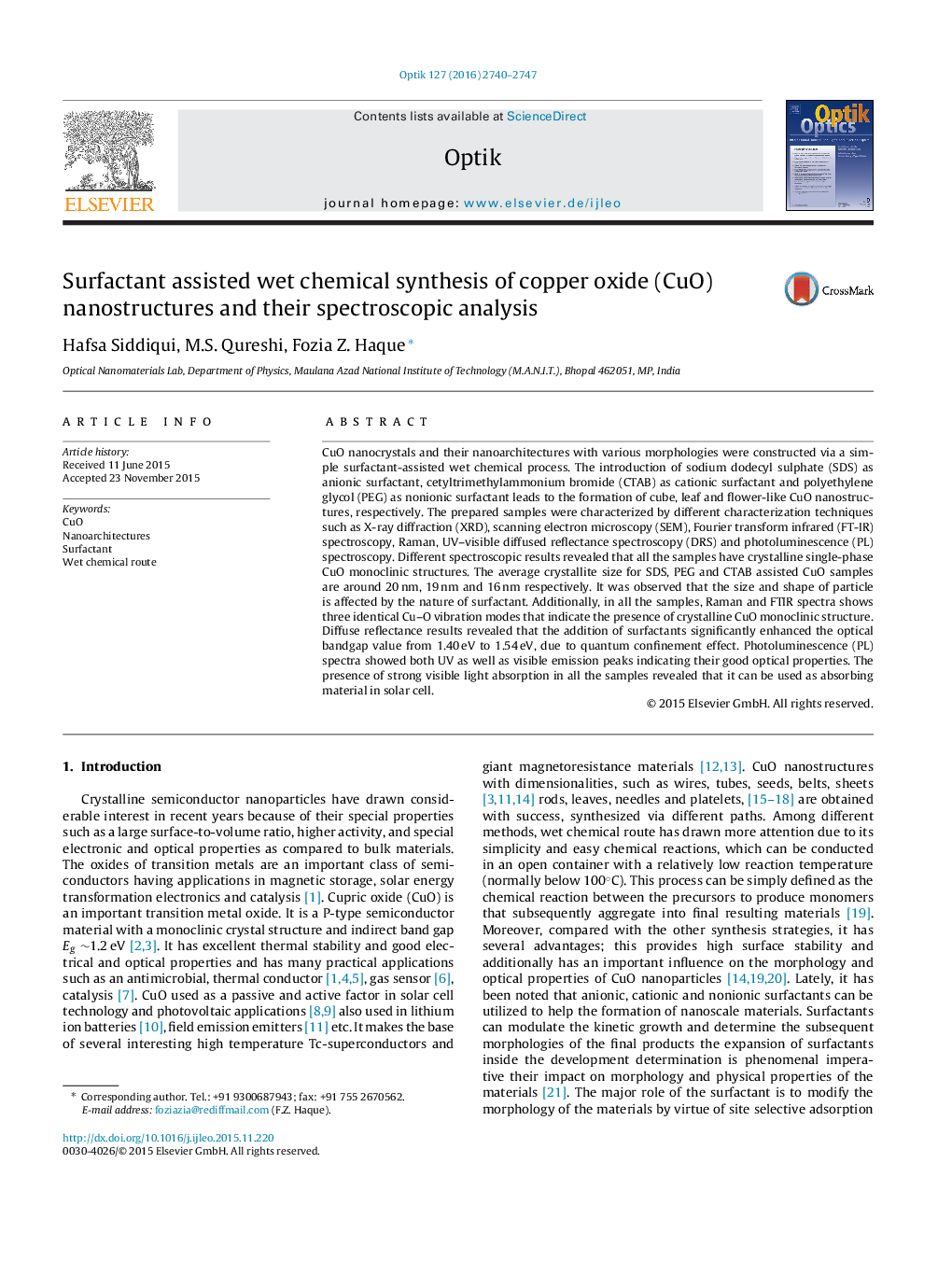| کد مقاله | کد نشریه | سال انتشار | مقاله انگلیسی | نسخه تمام متن |
|---|---|---|---|---|
| 847410 | 909226 | 2016 | 8 صفحه PDF | دانلود رایگان |

• CuO nanostructuressynthesized via simple wet chemical reaction methodusing SDS, CTAB and PEG as surfactant.
• Morphology of as-synthesized CuOnanostructuresis highlyaffected by the nature of surfactant.
• The possible capping moleculesattachment with Cu2+ during growth process has been proposed.
CuO nanocrystals and their nanoarchitectures with various morphologies were constructed via a simple surfactant-assisted wet chemical process. The introduction of sodium dodecyl sulphate (SDS) as anionic surfactant, cetyltrimethylammonium bromide (CTAB) as cationic surfactant and polyethylene glycol (PEG) as nonionic surfactant leads to the formation of cube, leaf and flower-like CuO nanostructures, respectively. The prepared samples were characterized by different characterization techniques such as X-ray diffraction (XRD), scanning electron microscopy (SEM), Fourier transform infrared (FT-IR) spectroscopy, Raman, UV–visible diffused reflectance spectroscopy (DRS) and photoluminescence (PL) spectroscopy. Different spectroscopic results revealed that all the samples have crystalline single-phase CuO monoclinic structures. The average crystallite size for SDS, PEG and CTAB assisted CuO samples are around 20 nm, 19 nm and 16 nm respectively. It was observed that the size and shape of particle is affected by the nature of surfactant. Additionally, in all the samples, Raman and FTIR spectra shows three identical Cu–O vibration modes that indicate the presence of crystalline CuO monoclinic structure. Diffuse reflectance results revealed that the addition of surfactants significantly enhanced the optical bandgap value from 1.40 eV to 1.54 eV, due to quantum confinement effect. Photoluminescence (PL) spectra showed both UV as well as visible emission peaks indicating their good optical properties. The presence of strong visible light absorption in all the samples revealed that it can be used as absorbing material in solar cell.
Surfactant assisted CuO nanostructures have been prepared via simple wet chemical reaction method. The growth mechanism confirmed that the particle sizeand morphology of nanostructures are affected by the nature of surfactant.Figure optionsDownload as PowerPoint slide
Journal: Optik - International Journal for Light and Electron Optics - Volume 127, Issue 5, March 2016, Pages 2740–2747